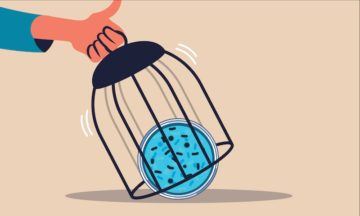Katherine Gammon in Nautilus:
 The organoids are coming, the organoids are coming! That’s not a midnight proclamation of science gone rogue—but right. These tiny three-dimensional structures made from human cells are now allowing scientists to perform important medical experiments that can’t be performed on humans themselves. And just as promising, they may obviate many animal experiments done for humans’ sake.
The organoids are coming, the organoids are coming! That’s not a midnight proclamation of science gone rogue—but right. These tiny three-dimensional structures made from human cells are now allowing scientists to perform important medical experiments that can’t be performed on humans themselves. And just as promising, they may obviate many animal experiments done for humans’ sake.
Despite their near ubiquity, a surprising number of animal experiments result in data that is neither valuable nor applicable to humans. Even between closely related animal species, testing does not produce the same results. For example, cancer experiments had similar outcomes in rats and mice only a little more than half of the time.1 “How can the rodent models predict human outcomes if they cannot predict each other very well?” asks Lena Smirnova, a neuroscientist at the Johns Hopkins Center for Alternatives to Animal Testing. Organoids, Smirnova says, represent a significant step forward. To grow an organoid, scientists start with stem cells, which have the potential to become any type of cell and can come from an embryo, a biopsy taken from a person, or from other adult cells coaxed back into stem cell capabilities (known as pluripotent stem cells). These biological acrobats are induced to turn into specific cell types by adding chemical signals in a sequence that mimics how those cell types develop from stem cells in an embryo.
More here.
